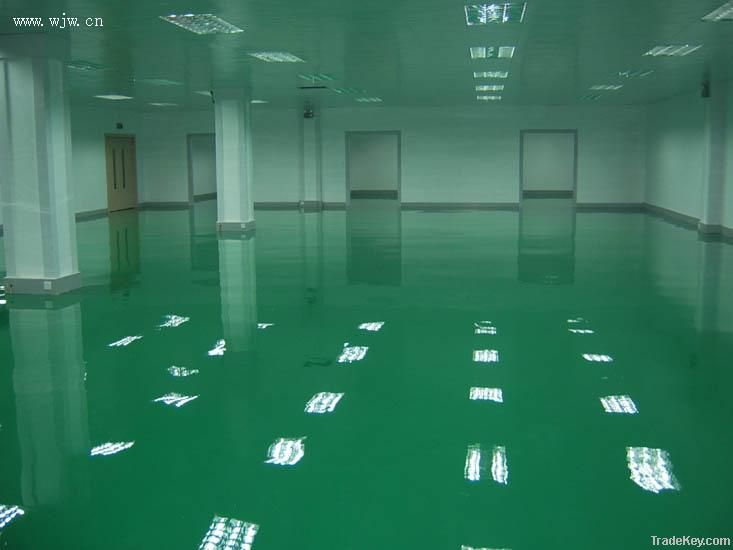

سعر فوب
أحصل على آخر سعر2100 ~ 2300 / Metric Ton ( Negotiable )
|20 Metric Ton Minimum Order
بلد:
China
نموذج رقم:
HYST-HYSZ
سعر فوب:
2100 ~ 2300 / Metric Ton ( Negotiable ) أحصل على آخر سعر
الموقع:
China
سعر الحد الأدنى للطلب:
2100 per Metric Ton
الحد الأدني للطلب:
20 Metric Ton
تفاصيل التغليف:
20, 200L drum or as request
موعد التسليم:
within 7-10 days after receiving deposit
القدرة على التوريد:
2000 Metric Ton per Month
نوع الدفع:
T/T, L/C, Western Union
مجموعة المنتج :
الشخص الذي يمكن الاتصال به Paul
Room 301, 3/F, Business Center, NO. 50, Middle HONGKONG Road, Shinan District, Qingdao, Shandong
Epoxy is a term used to denote both the basic components and the cured end products of epoxy resins, as well as a colloquial name for the epoxide functional group. Epoxy resins, also known as polyepoxides are a class of reactive prepolymers and polymers which contain epoxide groups. Epoxy resins may be reacted (cross-linked) either with themselves through catalytic homopolymerisation, or with a wide range of co-reactants including polyfunctional amines, acids (and acid anhydrides), phenols, alcohols and thiols. These co-reactants are often referred to as hardeners or curatives, and the cross-linking reaction is commonly referred to as curing. Reaction of polyepoxides with themselves or with polyfunctional hardeners forms a thermosetting polymer, often with high mechanical properties, temperature and chemical resistance. Epoxy has a wide range of applications, including metal coatings, use in electronics / electrical components, high tension electrical insulators, fiber-reinforced plastic materials and structural adhesives.
Bisphenol A Epoxy Resin
The most common and important class of epoxy resins is formed from
reacting epichlorhydrin with bisphenol A to form diglycidyl ethers
of bisphenol A. The simplest resin of this class is formed from
reacting two moles of epichlorhydrin with one mole of bisphenol A
to form the bisphenol A diglycidyl ether (commonly abbreviated to
DGEBA or BADGE). DGEBA resins are transparent
colourless-to-pale-yellow liquids at room temperature, with
viscosity typically in the range of ***5 Pa.s at *5°C. Industrial
grades normally contain some distribution of molecular weight,
since pure DGEBA shows a strong tendency to form a crystalline
solid upon storage at ambient temperature.
Bisphenol F Epoxy Resin
Bisphenol F may also undergo epoxidation in a similar fashion to
bisphenol A. Compared to DGEBA, bisphenol F epoxy resins have lower
viscosity and a higher mean epoxy content per gramme, which (once
cured) gives them increased chemical resistance.
Novolac Epoxy Resin
Reaction of phenols with formaldehyde and subsequent glycidylation
with epichlorhydrin produces epoxidised novolacs, such as epoxy
phenol novolacs (EPN) and epoxy cresol novolacs (ECN). These are
highly viscous to solid resins with typical mean epoxide
functionality of around 2 to 6. The high epoxide functionality of
these resins forms a highly crosslinked polymer network displaying
high temperature and chemical resistance, but low flexibility.
Aliphatic Epoxy Resin
Aliphatic epoxy resins are typically formed by glycidylation of
aliphatic alcohols or polyols. The resulting resins may be
monofunctional (e.g. dodecanol glycidyl ether), difunctional
(butanediol diglycidyl ether), or higher functionality (e.g.
trimethylolpropane triglycidyl ether). These resins typically
display low viscosity at room temperature (*****0 mPa.s) and are
often referred to as reactive diluents. They are rarely used alone,
but are rather employed to modify (reduce) the viscosity of other
epoxy resins. This has led to the term ‘modified epoxy resin’ to
denote those containing viscosity-lowering reactive diluents. A
related class is cycloaliphatic epoxy resin, which contains one or
more cycloaliphatic rings in the molecule (e.g.
3,*-epoxycyclohexylmethyl*3,*-epoxycyclohexane carboxylate). This
class also displays low viscosity at room temperature, but offers
significantly higher temperature resistance than the aliphatic
epoxy diluents. However, reactivity is rather low compared to other
classes of epoxy resin, and high temperature curing using suitable
accelerators is normally required.
Glycidylamine Epoxy Resin
Glycidylamine epoxy resins are higher functionality epoxies which
are formed when aromatic amines are reacted with epichlorhydrin.
Important industrial grades are triglycidyl-p-aminophenol
(functionality 3) and N,N,N,N-tetraglycidyl*4,*-methylenebis
benzylamine (functionality 4). The resins are low to medium
viscosity at room temperature, which makes them easier to process
than EPN or ECN resins. This coupled with high reactivity, plus
high temperature resistance and mechanical properties of the
resulting cured network makes them important materials for
aerospace composite applications.
Applications: Paints and coatings, Adhesives, Industrial tooling
and composites, Electrical systems and electronics, Consumer and
marine applications, Aerospace applications
| بلد: | China |
| نموذج رقم: | HYST-HYSZ |
| سعر فوب: | 2100 ~ 2300 / Metric Ton ( Negotiable ) أحصل على آخر سعر |
| الموقع: | China |
| سعر الحد الأدنى للطلب: | 2100 per Metric Ton |
| الحد الأدني للطلب: | 20 Metric Ton |
| تفاصيل التغليف: | 20, 200L drum or as request |
| موعد التسليم: | within 7-10 days after receiving deposit |
| القدرة على التوريد: | 2000 Metric Ton per Month |
| نوع الدفع: | T/T, L/C, Western Union |
| مجموعة المنتج : | Others |